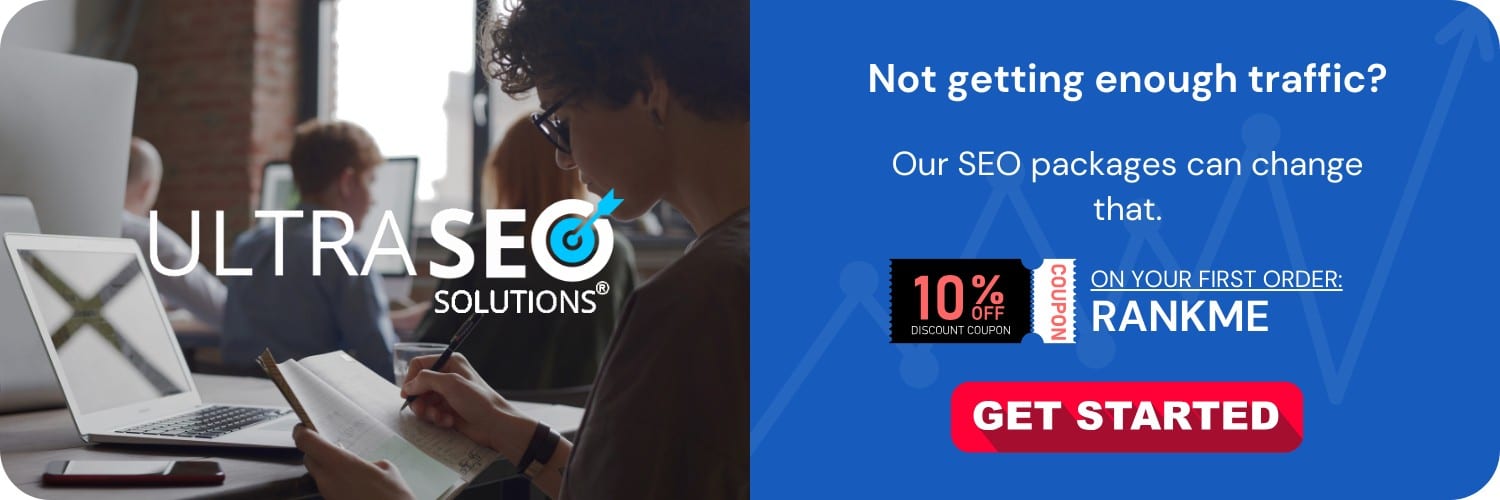
Using Google’s Data Studio for SEO reporting is an effective way to visualize the vast amounts of data generated from search engine optimization efforts. Google Data Studio allows you to create customizable, interactive dashboards and reports that can be shared easily across your team or with clients. It integrates with multiple data sources like Google Analytics, Google Search Console, and other third-party tools. To get started, you’ll need to access Google Data Studio, connect to your data sources, and then begin to create reports using the wide array of charts and tables available.
An In-Depth Guide to Google Data Studio for SEO Reporting
Getting Started with Google Data Studio
Before you can generate insightful SEO reports, you must familiarize yourself with the Data Studio interface. The first step is to sign in with your Google account at datastudio.google.com. Once logged in, you can start a new report by clicking on the “+” button. Here, you will be prompted to connect to a data source.
Connecting to Data Sources
Data Studio offers connectors for various data sources, with Google-owned platforms like Analytics, AdWords, and Search Console being the most direct. Follow these steps to connect your sources:
- Click on ‘Create’ and select ‘Data Source’.
- Choose the data source; for instance, Google Analytics or Search Console.
- Authorize the connection if prompted.
- Select the specific account, property, and view (for Google Analytics) or site (for Search Console).
- Click ‘Connect’ on the top right corner.
- After the data fields load, click ‘Add to Report’ to start using this data in your reports.
You can add multiple data sources to a single report, allowing for comprehensive SEO dashboards that reflect different aspects and data points of your SEO strategy.
Understanding Dimensions and Metrics
Data Studio distinguishes between dimensions and metrics, which is key to any report’s structure. Dimensions, such as page title or country, are the attributes of your data, whereas metrics, like pageviews or sessions, are the quantitative measurements. A good SEO report balances both to give a clear picture of performance.
Creating Your First SEO Report
Start your SEO report by selecting from a variety of visualization options:
- Time series charts for traffic trends over time
- Bar charts comparing the performance of top landing pages
- Pie charts showing traffic distribution among channels
- Tables detailing keyword positions from Search Console
For a basic SEO report, drag and drop widgets such as time series charts to track organic traffic and tables to showcase keyword rankings. Customize each widget by adjusting the data range, adding filters, and choosing which dimensions and metrics to display.
Enhancing Reports with Filters and Date Ranges
Filters allow you to create more granular and relevant reports. You can filter by device type, country, or any other dimension to isolate specific data segments.
Similarly, Data Studio provides date range controls, enabling you to focus on performance for a set period. This is crucial when demonstrating growth trends or identifying seasonal fluctuations in traffic.
Sharing and Collaboration
One of the main benefits of Google Data Studio is the ease with which you can share your reports. With just a few clicks, you can send reports to your team members or clients, and you even have the option to grant them editing rights.
- Click on ‘Share’ at the top right of the report.
- Enter the email addresses of the individuals you wish to share the report with.
- Choose the access level: Viewer or Editor.
- Click ‘Send’.
Recipients can then access the live report, see real-time data, and, if given the right permissions, make changes to the visualizations or apply different filters.
Combining Data from Different Sources
For more advanced reporting, Data Studio allows the blending of data from different sources. This can help to provide a more holistic view by combining metrics such as Google Analytics traffic data with rankings from Google Search Console.
Crafting a Narrative with Your Data
An essential aspect of reporting is storytelling — weaving your assorted metrics and dimensions into a coherent narrative that shows successes, identifies challenges, and outlines opportunities.
Utilize text boxes for commentary, annotations for spikes or drops in data, and design elements to ensure your insights are easily digestible and actionable for your audience.
Automating Reports
To save time and ensure regular reporting, set up automated delivery schedules through Data Studio. Your custom reports can be emailed periodically to stakeholders, reducing manual work and maintaining consistency in your SEO reporting.
Advanced Tips and Best Practices
While the basics will get you started, mastering Data Studio for SEO reporting requires some additional insights:
– Experiment with calculated fields to create custom metrics tailored to your reporting needs.
– Utilize conditional formatting for tables to highlight important data points.
– Implement segmentation by integrating filters within charts for a more dynamic report experience.
– Leverage data control features to let users choose which data sets to view.
– Keep your reports organized and navigable with clear labeling and the use of pages to segment different report sections.
Visual Design Considerations
Visual aesthetics play a significant role in the readability and professionalism of your reports. Be mindful of your color schemes, consistent spacing and sizing of elements, and the overall layout. Good design facilitates a better understanding of the data presented and keeps the viewer engaged.
Finishing Thoughts
Google Data Studio transforms SEO reporting from a routine task into an opportunity to share impactful insights and stories through data. With customizability, easy sharing features, and robust data integration capabilities, it equips SEO professionals with the tools needed to communicate their successes and areas for improvement in a clear, visually appealing format.
Through the steps discussed above and some practice, you will be able to leverage Google Data Studio to not just report on SEO performance but to inform critical strategic decisions. And remember, the key to a great report is not just the data but the clarity and insight with which it’s presented. Get creative, stay curious, and let your data tell the story of your SEO journey.
Frequently Asked Questions
What is Google’s Data Studio?
Google Data Studio is a free tool offered by Google that turns your data into customizable informative reports and dashboards that are easy to read, easy to share, and fully customizable. It’s often used for converting data from various sources into visual representations such as charts and graphs for easier analysis and decision-making.
How can I use Google Data Studio for SEO Reporting?
You can use Google Data Studio for SEO reporting by connecting it to various data sources that track your website’s performance, such as Google Analytics, Google Search Console, and other third-party SEO tools. Once connected, you can use Data Studio to create a dashboard that features key SEO metrics like traffic, SERP rankings, organic search performance, and more in a digestible format.
What steps are involved in setting up a Data Studio report for SEO purposes?
Setting up a Data Studio report for SEO involves several steps:
- Create a new Data Studio report and give it a title.
- Connect to your data sources, such as Google Analytics and Google Search Console.
- Choose the type of visualizations (charts, tables, graphs) that best represent your data.
- Customize your report by adding filters, date ranges, and segments specific to your SEO goals.
- Arrange your visualizations into a dashboard layout that tells a coherent story about your SEO performance.
- Share the report with your team or clients with appropriate view or edit permissions.
Can I combine data from different sources in a single Data Studio report?
Yes, Google Data Studio allows you to combine data from different sources in a single report. You can use data blending features to create a dataset that pulls in data from multiple sources, which is particularly useful for comprehensive SEO reporting.
Are there templates available to get started with SEO reporting in Data Studio?
Yes, there are a variety of templates available both from Google and third-party providers. Google offers a gallery of Data Studio report templates that users can copy and customize for their needs, including several templates designed for SEO reporting.
What are some key SEO metrics to include in a Data Studio report?
In your SEO report, you should consider including key performance metrics such as:
- Organic traffic and trends over time
- Bounce rate for organic search traffic
- Click-through rate (CTR) from search results
- Keyword rankings and visibility
- Landing page performance
- Conversions from organic traffic
- Backlink quantity and quality
These metrics provide insights into how well your SEO strategies are performing and where there might be opportunities for improvement.
How can I customize my Data Studio reports to reflect my branding?
Google Data Studio allows for extensive customization options. You can change colors, fonts, and layout to align with your branding. You can also insert logos and images to further personalize the report. Each element can be tailored to match your company’s style guide or the preferences of your audience.
Can I automate report updates in Data Studio?
Yes, Data Studio reports update automatically as new data becomes available from the connected data sources. You can also set up email delivery for periodic report sharing, ensuring your team or clients always have access to the latest data.
Is it possible to collaborate with others on a Data Studio report?
Yes, similar to other Google tools, Data Studio supports real-time collaboration. You can invite others to edit or view the report, and changes are reflected in real-time, facilitating teamwork and streamlined communication.
What if I need help understanding how to interpret the data in my SEO Data Studio report?
If you’re unfamiliar with SEO metrics or data analysis, consider seeking guidance from SEO experts or utilizing the tutorials and help resources provided by Google. The Data Studio Help Center offers extensive documentation, and there are numerous online communities and forums dedicated to discussing best practices for SEO reporting with Data Studio.






